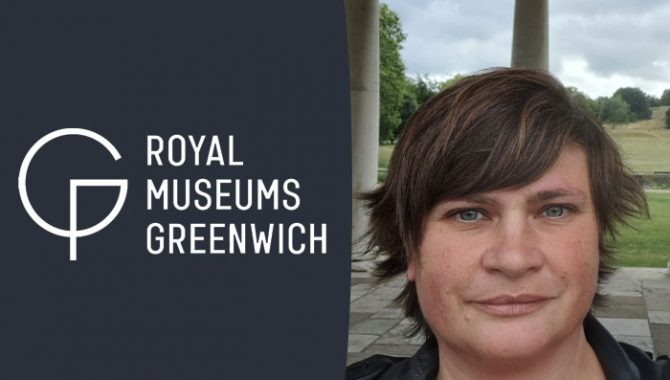—-
To stay in the loop with the latest features, news and interviews from the creative community around licensing, sign up to our weekly newsletter here

Abigail Ratcliffe, Senior Manager of Publishing and Licensing at Royal Museums Greenwich, on bringing the brand’s archive of art and objects into consumer products.
Hi Abigail, it’s great to connect. Can you tell us a little bit about the Royal Museums Greenwich?
We have four key sites: the National Maritime Museum, Queen’s House, The Royal Observatory and Cutty Sark, the last surviving tea clipper. Each is distinct and rich in stories but together they tell a united story of our relationship with the sea and stars.
You are attending BLE this year. Do you have some particular objectives for the show?
We are keen to widen our pool of licensees and investigate opportunities both within and outside traditional heritage licensing. We have an amazing archive of art and objects which we hope to share, as well as showcasing the brands and what they represent.
Can you pick out some highlights from your licensing programme – current or past examples?
We are especially proud of our relationship with Celestron and the growing range of telescopes which continue to perform strongly and also supports STEM learning.

Our collaboration with Playpress Toys is also one we are very proud of. One example is a Pirate Island – a sustainable, durable and long lasting playboard toy. Eco and environmentally friendly products are important to our values and our approach to the human impact on climate change.
Given the richness and variety of your collection, how do you manage to prioritise things what you bring into licensing?
We spend a lot of time working with licensees to identify their needs. The team have many years of experience in both licensing but also image research and photography and we have some amazing and very dedicated curators who are incredibly supportive.
How do you integrate licensing into your own retail business and product development?
We work extremely closely with our own retail team. They are a separate business and all licensed product is stocked on its own merit rather than a matter of course. We work closely together on strategy, identifying gaps in our offer and agreeing on the best routes to fill this, be it bespoke or licensed.
Are there any anniversaries on the horizon for RMG? This seems a core part of heritage licensing.
Heritage licensing loves an anniversary! Yes, the Royal Observatory will be 350 in 2025 – a huge milestone for us. While the details are still being worked on, we are of course eager to hear from licensees who would like to work on this celebration with us.
Finally, if a visitor had limited time in your museums, what three items would you recommend they should see?
This is a very subjective thing but I would choose the Shepherd Motor Clock. I have been on many tours of the Observatory recently with perspective licensees and this is now firmly my favourite. It looks very unassuming and could easily be missed amongst other clocks, but this is one of the most important clocks ever made. From 1852 to 1893 it was the heart of Britain’s time system. It sent time by telegraph wires to London, Edinburgh, Glasgow, Dublin, Belfast and even Harvard in Massachusetts via transatlantic submarine cable. A sympathetic dial connected to this clock, at the gates of the Royal Observatory, was the first clock to ever show Greenwich Mean Time directly to the public.

I’d also choose the Tulip staircase, located on the ground floor of the Queen’s House, Greenwich. It was the first geometric self-supporting spiral stair in Britain. The elegant blue wrought iron structure creates a striking contrast with the pristine white. Its iconic design has attracted millions of people to visit – from tourists to architects to budding photographers.

And my last ‘object’ would have to be ‘Nanny’, Cutty Sark’s figurehead. Figureheads are carved wooden sculptures that decorate the prows of sailing ships. In the perilous life of a ship at sea, figureheads were seen as lucky charms… They represented the spirit of the ship, protecting the crew from harsh seas and helping to guide them safely home. Nanny is inspired by a Robert Burns poem – the same poem inspired the ship’s name. She is truly formidable looking.

Great picks. Thanks Abigail.
Images courtesy of @NationalMaritimeMuseum
Enter your details to receive Brands Untapped updates & news.